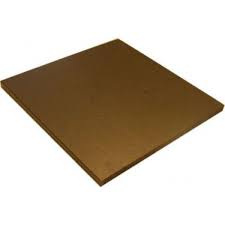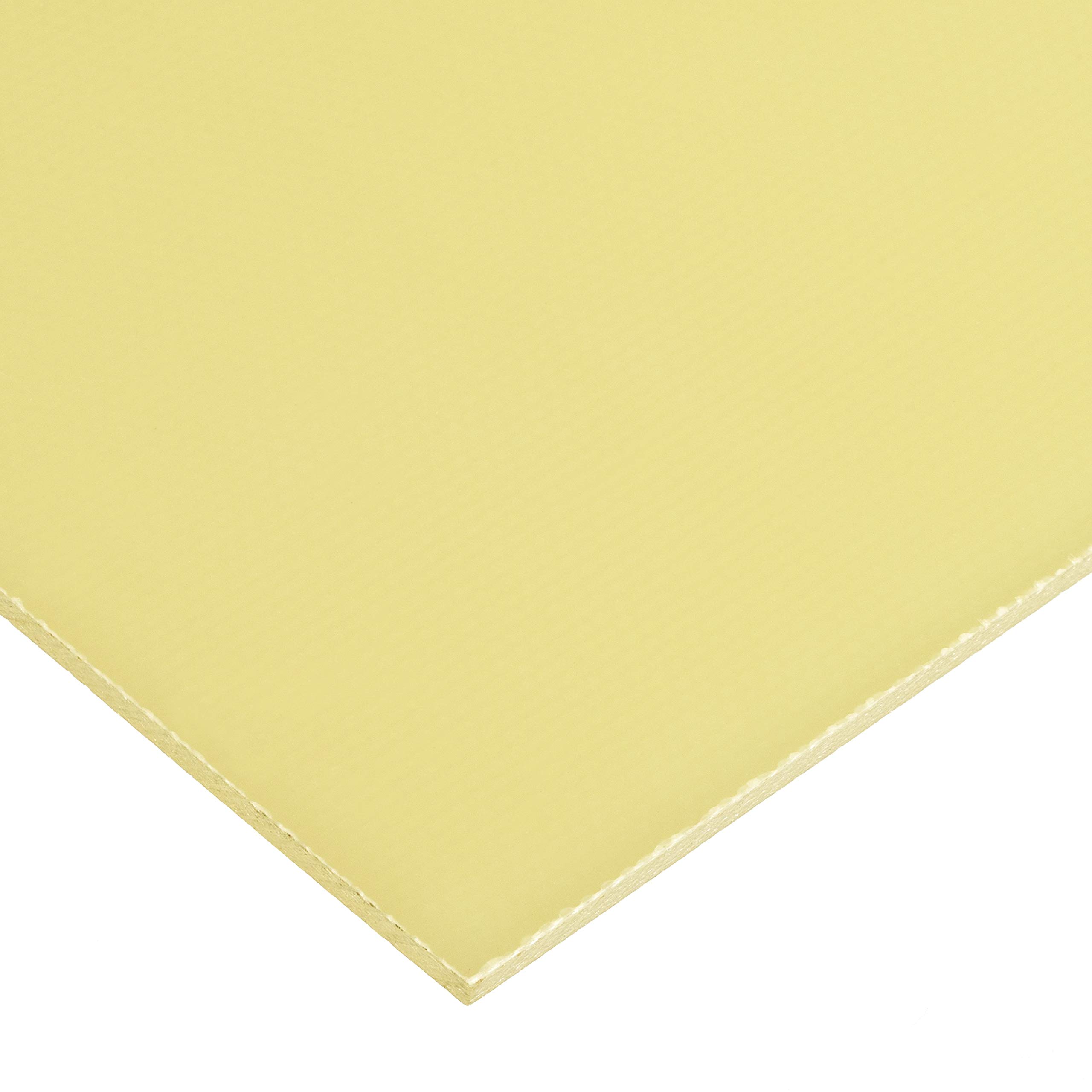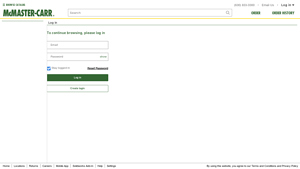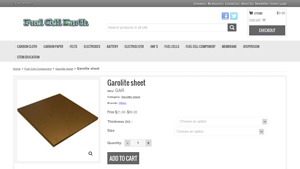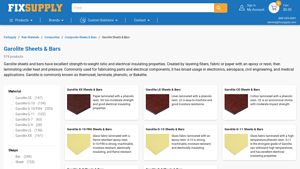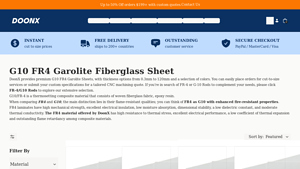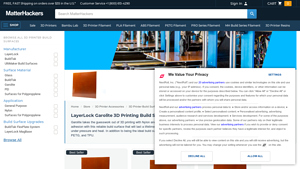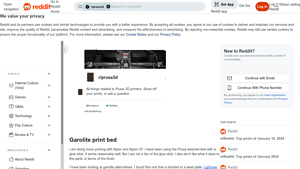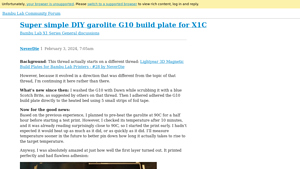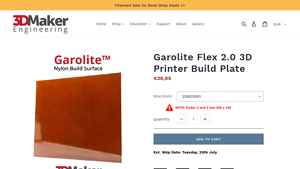Garolite Sheet Guide: Type, Cost, Top List…
Introduction: Navigating the Global Market for garolite sheet
In today’s competitive global market, sourcing high-quality garolite sheets can present a formidable challenge for international B2B buyers. With diverse applications ranging from aerospace to electronics, the demand for robust, lightweight, and electrically insulating materials is ever-increasing. This guide aims to empower buyers from regions such as Africa, South America, the Middle East, and Europe—including key markets like Brazil and Saudi Arabia—by providing a comprehensive overview of garolite sheets.
Throughout this guide, you will discover the various types of garolite sheets available, including G-10, G-11, and custom laminates, alongside their respective applications. We will delve into the nuances of selecting the right supplier, covering essential factors like quality assurance, certification, and production capabilities. Additionally, we will discuss pricing strategies, helping you navigate the cost implications of different grades and specifications.
By equipping you with actionable insights and expert knowledge, this guide aims to facilitate informed purchasing decisions, ensuring that you can confidently source garolite sheets that meet your project’s specific requirements. Whether you’re a procurement officer or an engineer, understanding the global market landscape for garolite will enable you to leverage this versatile material effectively, enhancing your business’s operational efficiency and product quality.
Understanding garolite sheet Types and Variations
| Type Name | Key Distinguishing Features | Primary B2B Applications | Brief Pros & Cons for Buyers |
|---|---|---|---|
| Garolite XX | Paper laminated with phenolic resin; moderate strength | Electrical components, insulation | Pros: Good electrical insulation; low cost. Cons: Limited mechanical strength. |
| Garolite LE | Linen laminated with phenolic resin; moisture resistant | Aerospace, automotive parts | Pros: Easy to machine; good moisture resistance. Cons: Higher cost than paper variants. |
| Garolite CE | Cotton laminated with phenolic resin; economical choice | General fabrication, low-stress applications | Pros: Cost-effective; moderate impact strength. Cons: Not suitable for high-stress environments. |
| Garolite G-10 FR4 | Glass fabric with flame retardant epoxy; high strength | Electronics, circuit boards, aerospace | Pros: Excellent strength; flame resistant. Cons: More expensive; requires precision machining. |
| Garolite G-11 | Glass fabric with high-temperature phenolic resin; strongest grade | Heavy-duty applications, industrial machinery | Pros: Superior strength; high-temperature resistance. Cons: Heavier; higher cost. |
What are the Characteristics of Garolite XX?
Garolite XX is a type of garolite sheet made from paper laminated with phenolic resin, providing moderate strength and good electrical insulation. This variant is primarily used in applications requiring electrical components and insulation. When purchasing, buyers should consider its cost-effectiveness for low-stress applications, but note that it may not be suitable for environments demanding high mechanical strength.
How Does Garolite LE Stand Out in Applications?
Garolite LE features linen laminated with phenolic resin, offering superior moisture resistance and ease of machining. It is favored in the aerospace and automotive industries for parts that require durability without the weight of heavier materials. Buyers should evaluate the potential for moisture exposure in their applications, as this type excels in such environments, albeit at a higher cost compared to paper-based options.
What Makes Garolite CE a Cost-Effective Choice?
Garolite CE consists of cotton laminated with phenolic resin, providing an economical option for general fabrication and low-stress applications. Its moderate impact strength makes it suitable for various industrial uses. While its affordability is a significant advantage, buyers should be cautious about its limitations in high-stress environments, where other variants may perform better.
Why Choose Garolite G-10 FR4 for Electronics?
Garolite G-10 FR4 is a glass fabric laminated with flame-retardant epoxy resin, known for its high strength and electrical insulating properties. This type is widely used in electronics, particularly for circuit boards and aerospace applications. Buyers should be prepared for a higher price point and ensure they have the necessary machining capabilities, as precision is key for effective use in critical applications.
What are the Benefits of Using Garolite G-11?
Garolite G-11 is the strongest grade of garolite, made from glass fabric laminated with a high-temperature phenolic resin. It is ideal for heavy-duty applications and industrial machinery due to its excellent strength and high-temperature resistance. Buyers must consider its weight and higher cost, but for applications requiring durability and reliability under extreme conditions, G-11 is a top choice.
Key Industrial Applications of garolite sheet
| Industry/Sector | Specific Application of garolite sheet | Value/Benefit for the Business | Key Sourcing Considerations for this Application |
|---|---|---|---|
| Aerospace | Insulating components in avionics systems | High dielectric strength and thermal stability | Certification standards for aviation-grade materials |
| Electronics | Circuit board substrates | Excellent electrical insulation and moisture resistance | Compliance with international electronic safety standards |
| Industrial Machinery | Wear plates and structural components | High strength-to-weight ratio, reducing overall machinery weight | Custom thickness and size options to fit specific machinery needs |
| Medical Devices | Parts for diagnostic equipment | Biocompatibility and durability in harsh environments | Verification of material safety and compliance with medical regulations |
| 3D Printing | Build surfaces for nylon and composite filaments | Enhanced adhesion and durability, improving print quality | Compatibility with various 3D printer models and materials |
How Is Garolite Sheet Used in Aerospace Applications?
In the aerospace industry, garolite sheets are utilized as insulating components in avionics systems, where they provide high dielectric strength and thermal stability. This is crucial for ensuring reliable operation of electronic devices in extreme conditions. For international buyers, especially in regions like the Middle East and Europe, sourcing garolite that meets specific certification standards for aviation-grade materials is essential to ensure compliance and safety.
What Role Does Garolite Sheet Play in Electronics?
Garolite sheets serve as circuit board substrates in the electronics sector, offering excellent electrical insulation and moisture resistance. These properties are vital for maintaining the integrity and performance of electronic components. B2B buyers from South America and Africa should consider sourcing materials that comply with international electronic safety standards to mitigate risks associated with electrical failures.
How Is Garolite Sheet Applied in Industrial Machinery?
In industrial machinery, garolite sheets are commonly used as wear plates and structural components. Their high strength-to-weight ratio allows manufacturers to reduce the overall weight of machinery while maintaining durability and performance. Buyers should focus on custom thickness and size options to ensure that the garolite sheets meet specific machinery requirements, particularly in diverse applications across various industries.
Why Is Garolite Sheet Important for Medical Devices?
Garolite sheets are integral in the manufacturing of parts for diagnostic equipment in the medical sector. Their biocompatibility and ability to withstand harsh environments make them ideal for applications where hygiene and durability are paramount. For international B2B buyers, verifying the material’s safety and compliance with medical regulations is critical to ensure patient safety and product efficacy.
How Does Garolite Sheet Enhance 3D Printing Capabilities?
In the realm of 3D printing, garolite sheets are used as build surfaces for nylon and composite filaments, providing enhanced adhesion and durability. This improves print quality and reduces failures during the printing process. Buyers should ensure compatibility with various 3D printer models and materials, particularly in regions with growing 3D printing markets, such as Europe and Brazil, to maximize operational efficiency.
3 Common User Pain Points for ‘garolite sheet’ & Their Solutions
Scenario 1: Difficulty in Selecting the Right Garolite Grade for Specific Applications
The Problem: B2B buyers often face challenges in selecting the appropriate Garolite sheet grade for their specific applications. With various types available—such as G-10, G-11, and G-7—each with distinct properties, it can be overwhelming to determine which one best meets their project requirements. This confusion can lead to the selection of an unsuitable grade, resulting in subpar performance, increased costs, or even project delays.
The Solution: To overcome this challenge, buyers should conduct thorough research and engage with manufacturers or suppliers to understand the specific properties of each Garolite grade. For example, G-10 is excellent for general-purpose applications due to its good electrical insulation and moisture resistance, while G-11 is ideal for high-temperature applications. Buyers should assess their specific needs, such as thermal stability, moisture exposure, and electrical insulation requirements, before making a decision. Additionally, creating a checklist of critical specifications can help streamline the selection process. Engaging in consultations with technical experts from suppliers can also provide valuable insights and ensure the right choice is made.
Scenario 2: Challenges in Machining and Fabricating Garolite Sheets
The Problem: Another common pain point for B2B buyers is the difficulty in machining and fabricating Garolite sheets. Due to their dense composition, improper machining techniques can lead to chipping, cracking, or excessive tool wear, which ultimately raises production costs and causes delays. This issue is particularly critical for industries that require precise dimensions and tolerances, such as aerospace and electronics.
The Solution: To address machining challenges, buyers should invest in high-quality cutting tools specifically designed for composite materials. Tungsten carbide tools are recommended for their durability and effectiveness in cutting through dense materials. Moreover, utilizing proper machining techniques—such as slower feed rates, appropriate cooling methods, and ensuring sharp cutting edges—can significantly improve the quality of the finished product. Buyers should also consider pre-machining tests with sample pieces to refine their processes before moving on to larger production runs. Partnering with experienced machinists or utilizing CNC machining services can further enhance precision and reduce waste.
Scenario 3: Ensuring Compatibility with 3D Printing Materials
The Problem: As industries increasingly adopt 3D printing technologies, buyers often encounter issues related to the compatibility of Garolite sheets with various filament types. While Garolite is known for providing excellent adhesion for nylon-based filaments, challenges can arise when printing with other materials like PLA or PETG. This can lead to adhesion failures, warping, and print quality issues, causing frustration and lost productivity.
The Solution: To ensure successful 3D printing with Garolite sheets, buyers should carefully consider the type of filament they plan to use and adjust their printing settings accordingly. For instance, using a heated bed and adjusting the nozzle temperature can enhance adhesion and reduce warping. It is advisable to conduct initial tests with different filaments to determine the optimal settings for each material. Additionally, incorporating a layer of adhesive, such as PVA glue, can improve adhesion for filaments that typically struggle with sticking to Garolite surfaces. Collaborating with suppliers who specialize in 3D printing can provide further insights and recommendations tailored to specific projects, ensuring a smoother printing process and higher-quality outcomes.
Strategic Material Selection Guide for garolite sheet
What Are the Key Properties of Different Garolite Sheet Materials?
Garolite sheets are composed of various materials, each with unique properties that influence their performance in specific applications. Understanding these materials is crucial for B2B buyers looking to select the right type for their needs.
1. Garolite G-10/FR-4: The Versatile Workhorse
Key Properties: G-10/FR-4 is a glass fabric laminated with a flame-retardant epoxy resin. It boasts excellent mechanical strength, moisture resistance, and electrical insulating properties. This material can withstand temperatures up to 130°C (266°F) and has a high dielectric strength.
Pros & Cons: The durability and versatility of G-10/FR-4 make it suitable for a wide range of applications, including electrical components and structural parts. However, its manufacturing complexity can lead to higher costs compared to simpler materials.
Impact on Application: G-10/FR-4 is particularly effective in environments where electrical insulation and flame resistance are paramount, such as in aerospace and electronics.
Considerations for International Buyers: Buyers from regions like Europe and the Middle East should ensure compliance with standards such as ASTM D648 and UL 94 for flame resistance, which are critical for safety in electrical applications.
2. Garolite G-11: High-Temperature Performance
Key Properties: Garolite G-11 is made from glass fabric laminated with a high-temperature phenolic resin. It can endure temperatures up to 180°C (356°F) and has excellent mechanical strength and electrical insulation.
Pros & Cons: The high-temperature resistance of G-11 makes it ideal for applications in harsh environments, such as automotive and industrial machinery. However, its higher cost and complex machining requirements may deter some buyers.
Impact on Application: G-11 is particularly suitable for parts that experience significant thermal stress, ensuring longevity and reliability in critical applications.
Considerations for International Buyers: Compliance with international standards, including DIN 7735 for thermal properties, is essential for buyers in South America and Africa, where industrial applications may vary significantly.
3. Garolite G-7: Superior Strength and Insulation
Key Properties: Composed of glass fabric laminated with silicone resin, Garolite G-7 offers superior strength and electrical insulating properties, withstanding temperatures exceeding 200°C (392°F).
Pros & Cons: G-7 is highly durable and resistant to chemical corrosion, making it suitable for demanding environments. However, its higher price point and limited availability can be a barrier for some buyers.
Impact on Application: Ideal for applications in the chemical processing and aerospace industries, G-7 provides reliability where both strength and thermal stability are required.
Considerations for International Buyers: Buyers must consider local sourcing options and compliance with specific industry standards, especially in regions like Brazil and Saudi Arabia, where regulations may differ.
4. Garolite CE: Cost-Effective Solution
Key Properties: Garolite CE is made from cotton fabric laminated with phenolic resin. It offers moderate impact strength and good moisture resistance, making it a cost-effective choice for various applications.
Pros & Cons: The affordability of Garolite CE makes it an attractive option for budget-conscious projects. However, its lower strength and thermal resistance compared to other grades may limit its use in high-performance applications.
Impact on Application: Suitable for general-purpose applications, Garolite CE is often used in construction and manufacturing where high mechanical properties are not critical.
Considerations for International Buyers: Buyers should be aware of local market conditions and material availability, especially in emerging markets in Africa and South America, where cost-effectiveness is often a priority.
Summary Table of Garolite Sheet Materials
| Material | Typical Use Case for garolite sheet | Key Advantage | Key Disadvantage/Limitation | Relative Cost (Low/Med/High) |
|---|---|---|---|---|
| G-10/FR-4 | Electrical components, structural parts | Excellent mechanical strength and insulation | Higher manufacturing complexity | Medium |
| G-11 | High-temperature industrial applications | Superior thermal resistance | Higher cost and complex machining | High |
| G-7 | Chemical processing, aerospace | Exceptional strength and corrosion resistance | Limited availability and higher price | High |
| CE | General-purpose applications | Cost-effective and easy to source | Moderate strength and thermal resistance | Low |
This strategic material selection guide aims to equip international B2B buyers with the necessary insights to make informed decisions regarding garolite sheets, ensuring optimal performance in their specific applications.
In-depth Look: Manufacturing Processes and Quality Assurance for garolite sheet
What Are the Key Stages in the Manufacturing Process of Garolite Sheets?
The manufacturing process of garolite sheets involves several critical stages, each ensuring the final product meets the high standards required for various applications.
-
Material Preparation: The process begins with the selection of base materials, typically fabrics or papers made from glass, cotton, or linen. These materials are treated with epoxy or phenolic resin. The quality of these raw materials is paramount, as they contribute to the mechanical and electrical properties of the final product. Suppliers must ensure that the fabrics are free from defects and meet specified thickness and tensile strength criteria.
-
Forming and Lamination: Once the materials are prepared, they undergo a lamination process. This involves layering the prepared fabric with resin and applying heat and pressure. The lamination parameters, such as temperature and duration, are carefully controlled to ensure optimal bonding. This stage is crucial, as improper lamination can lead to weak spots in the final product.
-
Curing: After lamination, the sheets are cured to solidify the resin and enhance the mechanical properties of the garolite. Curing times and temperatures vary depending on the resin type used. This process not only provides the necessary strength but also enhances moisture and thermal resistance.
-
Finishing: The final stage involves cutting the garolite sheets to specific dimensions and applying surface treatments if required. This may include sanding or coating to improve surface characteristics, such as smoothness or adhesion properties. Quality checks during this stage ensure that the sheets meet the specified tolerances and surface quality.
What Quality Control Measures Are Critical for Garolite Sheet Manufacturing?
Quality control (QC) is integral to the manufacturing of garolite sheets, ensuring that the final products are reliable and meet international standards.
-
International Standards Compliance: Many manufacturers adhere to ISO 9001, which focuses on quality management systems. Compliance with ISO standards assures buyers of consistent quality and operational efficiency. Additionally, industry-specific certifications, such as CE marking for European markets or API standards for oil and gas applications, are critical for certain markets.
-
Quality Checkpoints:
– Incoming Quality Control (IQC): This initial phase involves inspecting raw materials upon delivery. Suppliers should verify that materials meet specifications and are free from defects before they enter the production process.
– In-Process Quality Control (IPQC): During the manufacturing stages, ongoing checks ensure that processes adhere to set parameters. This includes monitoring temperature and pressure during lamination and verifying the curing process.
– Final Quality Control (FQC): Once the sheets are manufactured, they undergo final inspections to check dimensions, surface quality, and mechanical properties. Testing methods may include tensile strength tests, moisture absorption tests, and electrical insulation tests. -
Common Testing Methods: Various testing methods are employed to ensure product integrity. These can include:
– Tensile Testing: Measures the strength and ductility of the material.
– Dielectric Strength Testing: Assesses the material’s electrical insulating properties.
– Thermal Stability Testing: Evaluates how well the material withstands high temperatures.
How Can B2B Buyers Verify Supplier Quality Control Processes?
For international B2B buyers, particularly those in regions like Africa, South America, the Middle East, and Europe, verifying the quality control measures of suppliers is crucial to ensure product reliability.
-
Supplier Audits: Conducting regular audits of potential suppliers can provide insights into their quality control processes. This includes reviewing their manufacturing practices, QC checkpoints, and compliance with international standards. Audits may be performed by the buyer’s quality assurance team or through third-party agencies.
-
Documentation and Reports: Requesting detailed documentation from suppliers can help verify their quality control systems. This includes quality assurance reports, test results, and compliance certificates. Buyers should ensure that these documents are up-to-date and cover all necessary aspects of the manufacturing process.
-
Third-Party Inspections: Utilizing third-party inspection services can add an additional layer of verification. These organizations can conduct independent assessments of the manufacturing process and final products, ensuring that they meet specified standards and requirements.
What Are the Specific Quality Control Considerations for International Buyers?
When sourcing garolite sheets internationally, buyers should be aware of specific nuances that may impact quality assurance:
-
Cultural and Regulatory Differences: Different regions may have varying standards and regulations governing materials used in manufacturing. Understanding these differences is essential for ensuring compliance and product suitability in the intended market.
-
Communication Barriers: Language and cultural differences can pose challenges in understanding product specifications and quality requirements. Establishing clear lines of communication and utilizing skilled intermediaries can help bridge these gaps.
-
Logistical Considerations: The transportation of garolite sheets across borders can introduce risks such as damage during transit. Buyers should discuss packaging and handling procedures with suppliers to mitigate these risks and ensure product integrity upon arrival.
-
Market-Specific Requirements: Certain industries may have additional requirements, such as flame retardancy or specific electrical properties. Buyers should communicate their specific needs clearly and verify that suppliers can meet these requirements.
In conclusion, the manufacturing processes and quality assurance measures for garolite sheets are critical components that B2B buyers must consider when sourcing these materials. By understanding the manufacturing stages, quality control practices, and verification methods, buyers can make informed decisions that ensure the reliability and performance of garolite sheets for their applications.
Practical Sourcing Guide: A Step-by-Step Checklist for ‘garolite sheet’
This guide is designed to assist B2B buyers in navigating the procurement process for garolite sheets, ensuring that you make informed decisions that meet your operational needs. By following this checklist, you can streamline your sourcing efforts, mitigate risks, and establish relationships with reputable suppliers.
Step 1: Define Your Technical Specifications
Begin by outlining the specific requirements for your garolite sheets, including material type, thickness, dimensions, and intended application. Different grades of garolite, such as G-10 or G-11, offer unique properties like electrical insulation and thermal resistance. Clearly defining these specifications will help you communicate effectively with suppliers and ensure you receive the correct product.
Step 2: Research Potential Suppliers
Conduct thorough research to identify suppliers who specialize in garolite products. Look for companies with a strong reputation in the market and experience in supplying your specific industry. Utilize online platforms, industry directories, and trade shows to gather a list of potential suppliers, paying attention to their product range and customer feedback.
Step 3: Evaluate Supplier Certifications
Before making a commitment, ensure that your shortlisted suppliers hold relevant certifications that validate their quality control processes. Certifications like ISO 9001 or industry-specific standards indicate a commitment to quality and reliability. This step is crucial as it reduces the risk of receiving subpar materials that could impact your operations.
Step 4: Request Samples for Testing
Always request samples of garolite sheets before placing a bulk order. Testing samples will allow you to evaluate the material’s performance, including its machinability, strength, and insulation properties. This hands-on assessment can prevent costly errors and ensure that the product meets your expectations.
Step 5: Compare Pricing and Terms
Once you have selected a few potential suppliers, compare their pricing structures and payment terms. While price is an important factor, also consider factors like shipping costs, lead times, and payment flexibility. A lower price might not be advantageous if it comes with longer lead times or additional hidden costs.
Step 6: Assess Customer Support and Service
Evaluate the level of customer support offered by the suppliers. A responsive and knowledgeable customer service team can provide valuable assistance throughout the purchasing process, from addressing technical queries to troubleshooting issues post-purchase. Good customer support is indicative of a supplier’s commitment to their clients.
Step 7: Establish Long-term Relationships
Once you have made a successful purchase, consider establishing a long-term relationship with your supplier. Open lines of communication can lead to better pricing, improved service, and priority access to new products or innovations. Regular engagement with your suppliers can also foster trust and reliability in future transactions.
By following this checklist, you can effectively navigate the complexities of sourcing garolite sheets, ensuring that your procurement process aligns with your business objectives and quality standards.
Comprehensive Cost and Pricing Analysis for garolite sheet Sourcing
What Are the Key Cost Components in Garolite Sheet Sourcing?
When sourcing garolite sheets, a comprehensive understanding of the cost structure is vital. The primary cost components include:
-
Materials: Garolite is produced from layers of fabric or paper impregnated with epoxy or phenolic resin. The choice of material—be it G-10, G-11, or other grades—significantly influences pricing due to varying properties and production processes. Specialty grades like G-7 offer higher performance but at a premium cost.
-
Labor: Labor costs can vary based on the region of manufacturing. Skilled labor is needed for precise cutting and machining of garolite sheets, which can affect the overall cost depending on local wage standards.
-
Manufacturing Overhead: This encompasses utilities, equipment maintenance, and facility costs. Efficient manufacturing processes can help keep overhead low, impacting the final price positively.
-
Tooling: The initial investment in molds and cutting tools can be substantial, especially for customized orders. This cost is usually amortized over production runs, affecting pricing for smaller orders.
-
Quality Control (QC): Ensuring that each sheet meets rigorous quality standards incurs additional costs. Certifications for electrical insulation, moisture resistance, and flame retardancy may be required for certain applications, adding to the price.
-
Logistics: Shipping costs, including freight and customs duties, can be significant, especially for international buyers. The choice of Incoterms (e.g., FOB, CIF) will also influence total logistics costs.
-
Margin: Suppliers typically add a margin to cover their operational costs and profit. This can vary widely depending on the supplier’s market positioning and the competitive landscape.
How Do Price Influencers Affect Garolite Sheet Sourcing?
Several factors can influence the pricing of garolite sheets:
-
Volume/MOQ: Larger orders usually attract discounts due to economies of scale. Buyers should consider their current and future needs to leverage better pricing.
-
Specifications/Customization: Custom sizes or specifications may incur additional costs. It’s essential to clearly define your requirements upfront to avoid unexpected expenses.
-
Materials Quality/Certifications: Higher quality materials and certifications can drive up costs. However, these investments often lead to better performance and longevity, reducing the Total Cost of Ownership (TCO).
-
Supplier Factors: The supplier’s reputation, reliability, and service quality can impact pricing. Established suppliers may charge more due to their proven track record and customer support.
-
Incoterms: Understanding the responsibilities of buyers and sellers under different Incoterms can help manage logistics costs. Choosing the right terms can optimize shipping and handling expenses.
What Are Some Buyer Tips for Cost-Efficiency in Garolite Sheet Sourcing?
For international B2B buyers, especially from regions like Africa, South America, the Middle East, and Europe, strategic sourcing of garolite sheets can lead to significant cost savings:
-
Negotiation: Don’t hesitate to negotiate prices, especially for bulk orders. Suppliers often have flexibility in pricing that can benefit both parties.
-
Consider Total Cost of Ownership (TCO): Evaluate not just the purchase price but also the long-term costs associated with durability, maintenance, and replacement. Investing in higher-quality sheets may reduce overall expenditure over time.
-
Explore Multiple Suppliers: Diversifying your supplier base can lead to better pricing and reduced risks associated with reliance on a single source. Collecting quotes from various suppliers can provide leverage in negotiations.
-
Stay Informed About Market Trends: Keeping abreast of changes in raw material costs and supply chain dynamics can help you time your purchases better, potentially saving money.
-
Understand Regional Differences: Be aware that sourcing from different regions can lead to variations in price due to local market conditions, tariffs, and logistics costs. Conduct thorough market research before making decisions.
Disclaimer
The prices indicated in this analysis are indicative and subject to change based on market conditions, supplier negotiations, and specific order requirements. Always consult with suppliers for the most accurate and up-to-date pricing.
Alternatives Analysis: Comparing garolite sheet With Other Solutions
In the search for effective materials in various industrial applications, especially in sectors like electronics, aerospace, and civil engineering, it’s crucial to evaluate alternatives to garolite sheets. Garolite, a composite material known for its excellent strength-to-weight ratio and electrical insulating properties, is often used in fabricating parts and electrical components. However, several alternatives exist, each with distinct advantages and disadvantages that may suit specific applications better than garolite.
Comparison Table of Garolite Sheet vs. Alternatives
| Comparison Aspect | Garolite Sheet | Alternative 1: FR-4 Epoxy Sheet | Alternative 2: Aluminum Sheet |
|---|---|---|---|
| Performance | High strength, excellent insulation | Strong, good moisture resistance | High strength, lightweight |
| Cost | Moderate to high | Moderate | Moderate to high |
| Ease of Implementation | Requires specialized machining | Easy to cut and machine | Easy to machine, readily available |
| Maintenance | Low (durable and long-lasting) | Low (also durable) | Medium (corrosion potential) |
| Best Use Case | Electrical insulation, structural parts | PCB substrates, general electronics | Structural applications, heat sinks |
What Are the Pros and Cons of Using FR-4 Epoxy Sheets?
FR-4 epoxy sheets are a popular alternative to garolite sheets, particularly in electronic applications. Made from woven fiberglass cloth and epoxy resin, they offer excellent electrical insulation and mechanical strength.
Pros: FR-4 is cost-effective, easy to machine, and can be used in a variety of applications, including printed circuit boards (PCBs). Its moisture resistance makes it suitable for humid environments.
Cons: While it has good thermal stability, FR-4 does not perform as well at high temperatures compared to some grades of garolite. Additionally, it may not provide the same level of mechanical strength in high-stress applications.
How Does Aluminum Sheet Compare to Garolite Sheets?
Aluminum sheets are widely used across various industries due to their lightweight nature and excellent strength-to-weight ratio.
Pros: They are easy to machine, readily available, and exhibit high thermal and electrical conductivity. This makes aluminum a preferred choice for heat sinks and structural components.
Cons: However, aluminum is prone to corrosion unless properly treated, which can lead to increased maintenance costs. Additionally, while it offers good strength, it does not provide the same insulation properties as garolite, making it less suitable for electrical applications.
How Can B2B Buyers Choose the Right Material for Their Needs?
When selecting the right material for specific applications, B2B buyers should consider factors such as the intended use, environmental conditions, and budget constraints. For applications requiring electrical insulation, garolite sheets may be superior due to their insulating properties. In contrast, for projects that demand lightweight and high-strength materials, aluminum may be more appropriate.
Ultimately, conducting a thorough analysis of the performance characteristics, costs, and ease of implementation of each alternative will empower buyers to make informed decisions that align with their operational needs and objectives.
Essential Technical Properties and Trade Terminology for garolite sheet
What Are the Key Technical Properties of Garolite Sheets?
Garolite sheets are renowned for their versatility and performance across various industries. Understanding their technical properties is essential for B2B buyers to make informed procurement decisions.
1. Material Grade
Garolite sheets come in different grades, including G-10, G-11, and G-7, each tailored for specific applications. G-10, for instance, is a glass fabric laminated with epoxy resin, offering excellent strength and moisture resistance. G-11 is known for its high-temperature tolerance, making it suitable for demanding environments. Choosing the right grade ensures optimal performance and longevity in end applications.
2. Thickness
The thickness of Garolite sheets typically ranges from 0.5 mm to 12 mm or more, depending on the application requirements. Thicker sheets generally provide enhanced strength and durability, which is critical in structural applications. Understanding the required thickness is crucial for ensuring the sheet can withstand operational stresses without compromising performance.
3. Tolerance
Tolerance refers to the permissible limit of variation in dimensions and is critical for applications requiring precise fit and function. Garolite sheets are manufactured with strict tolerances to ensure compatibility with machinery and components. Accurate tolerances minimize the risk of assembly issues and enhance the reliability of the final product.
4. Electrical Insulation Properties
Garolite is often used in electrical applications due to its excellent insulating properties. The material effectively prevents electrical conduction, which is essential in applications such as circuit boards and electrical housings. For B2B buyers in the electronics sector, selecting Garolite with superior electrical insulation can enhance safety and performance.
5. Impact Strength
Impact strength indicates the material’s ability to resist shock loads. Garolite sheets, especially those made from G-10 and G-11 grades, are known for their high impact strength, making them ideal for use in high-stress environments. This property is particularly important in industries like aerospace and automotive, where components face dynamic forces.
6. Moisture Resistance
Moisture resistance is a key property for Garolite, especially in humid environments. Materials like Garolite LE (linen laminated) are designed for good moisture resistance, preventing degradation over time. This characteristic is vital for applications in marine or outdoor settings, ensuring durability and longevity.
What Are Common Trade Terms Related to Garolite Sheets?
Understanding industry-specific terminology is essential for navigating the B2B procurement landscape effectively.
1. OEM (Original Equipment Manufacturer)
OEM refers to companies that produce parts or equipment that may be marketed by another manufacturer. For Garolite sheets, OEMs often require specific grades and dimensions for their products. Familiarity with OEM specifications can streamline procurement and ensure compatibility with existing systems.
2. MOQ (Minimum Order Quantity)
MOQ indicates the smallest quantity of a product that a supplier is willing to sell. For Garolite sheets, MOQs can vary significantly based on supplier policies and material grades. Knowing the MOQ helps buyers plan their inventory and budget accordingly, avoiding overstock or stockouts.
3. RFQ (Request for Quotation)
An RFQ is a document sent to suppliers requesting pricing and terms for specific products. When considering Garolite sheets, submitting an RFQ allows buyers to compare prices, lead times, and terms across multiple suppliers, facilitating informed purchasing decisions.
4. Incoterms (International Commercial Terms)
Incoterms are internationally recognized rules that define the responsibilities of buyers and sellers in international transactions. They clarify aspects such as shipping, insurance, and customs clearance for Garolite sheets. Understanding Incoterms helps buyers mitigate risks and avoid misunderstandings in international procurement.
5. Lead Time
Lead time refers to the time taken from placing an order to receiving the product. For Garolite sheets, lead times can vary based on custom orders or stock availability. Knowing the expected lead time is crucial for production planning and project timelines.
6. Certification
Certification indicates that a product meets specific industry standards or regulations. For Garolite sheets, certifications may pertain to material properties, safety, or environmental compliance. Buyers should prioritize certified materials to ensure quality and compliance with industry standards.
By grasping these technical properties and trade terminologies, B2B buyers can navigate the procurement of Garolite sheets more effectively, ensuring they select the right materials for their specific applications.
Navigating Market Dynamics and Sourcing Trends in the garolite sheet Sector
What Are the Key Market Trends Influencing the Garolite Sheet Sector?
The global market for garolite sheets is witnessing significant growth, fueled by diverse applications across industries such as aerospace, electronics, and civil engineering. Key drivers include the increasing demand for lightweight and durable materials that can withstand harsh environmental conditions. The rise of 3D printing technology is also transforming sourcing strategies, as garolite sheets are favored for their excellent adhesion properties with various filaments, particularly in advanced manufacturing processes.
International buyers, especially from Africa, South America, the Middle East, and Europe, are increasingly seeking suppliers who can provide custom sizes and specifications to meet specific project needs. This trend is enhanced by the growing emphasis on localized sourcing to reduce logistics costs and enhance supply chain resilience. Furthermore, advancements in composite materials and the integration of smart technologies are shaping the future of garolite sheet applications, allowing for enhanced performance and functionality in various use cases.
As the market evolves, B2B buyers must stay informed about emerging suppliers, material innovations, and shifts in demand, particularly in regions experiencing industrial growth. Establishing partnerships with manufacturers that prioritize quality and technological advancements will be crucial for leveraging the benefits of garolite sheets in their operations.
How Can Sustainability and Ethical Sourcing Impact Garolite Sheet Procurement?
Sustainability has become a cornerstone of procurement strategies in the garolite sheet sector. The environmental impact of materials and manufacturing processes is increasingly scrutinized, pushing businesses to seek out suppliers committed to sustainable practices. Ethical sourcing is not just about compliance; it’s about building a brand reputation that resonates with environmentally-conscious consumers and stakeholders.
Buyers are encouraged to look for garolite sheets that are certified as green or made from recycled materials. Certifications such as ISO 14001 for environmental management systems can provide assurance that suppliers are adhering to sustainable practices. Additionally, the demand for transparency in supply chains is growing; buyers should ensure that their sourcing partners can provide information about the origins of their raw materials and the environmental impact of their manufacturing processes.
Implementing sustainable practices in sourcing can lead to long-term cost savings and improved operational efficiency. By prioritizing suppliers who demonstrate a commitment to sustainability, B2B buyers can not only meet regulatory requirements but also contribute positively to their own corporate social responsibility goals.
What Is the Historical Context of Garolite Sheets for B2B Buyers?
The evolution of garolite sheets dates back to the early 20th century when they were first developed as a composite material. Initially, garolite was utilized primarily for electrical insulation and structural applications due to its excellent strength-to-weight ratio and resistance to moisture and chemicals. Over the decades, advancements in material science have led to the development of various grades of garolite, such as G-10 and G-11, which are tailored for specific applications in high-performance environments.
As industries have evolved, so too has the use of garolite sheets, expanding into sectors like aerospace and advanced manufacturing. Today, these materials are recognized not only for their functional properties but also for their versatility in modern applications, particularly with the rise of 3D printing and additive manufacturing technologies. Understanding this historical context helps B2B buyers appreciate the material’s capabilities and make informed decisions when sourcing garolite sheets for their projects.
Frequently Asked Questions (FAQs) for B2B Buyers of garolite sheet
-
How do I choose the right type of garolite sheet for my application?
Selecting the appropriate garolite sheet depends on your specific application requirements. For electrical insulation, G-10/FR4 is ideal due to its flame-resistant properties. If moisture resistance is crucial, consider G-11 or G-9. For applications requiring high strength at elevated temperatures, G-7 is recommended. Assess factors such as mechanical strength, thermal resistance, and moisture absorption before making a decision. It may also be beneficial to consult with suppliers for samples to evaluate their performance in your particular context. -
What are the common applications of garolite sheets in various industries?
Garolite sheets are widely used across multiple sectors due to their versatile properties. In aerospace, they are utilized for structural components and electrical insulation. In the medical field, garolite is favored for its hygiene and durability in medical devices. Electrical applications often leverage garolite for circuit boards and insulators. Additionally, they serve in civil engineering for construction components. Understanding your industry’s specific needs will help you identify the most suitable garolite type. -
What is the minimum order quantity (MOQ) for garolite sheets?
The MOQ for garolite sheets can vary significantly among suppliers and depends on the specific type and size of the sheet. Typically, MOQs range from 10 to 100 sheets, but some manufacturers may accommodate lower quantities for sample orders. It’s advisable to discuss your requirements directly with suppliers to explore flexible ordering options, especially if you’re entering a new market or testing a new application. -
How do I ensure quality assurance when sourcing garolite sheets internationally?
To ensure quality assurance, request certifications such as ISO 9001 from your suppliers, which indicates adherence to quality management standards. Additionally, consider implementing a third-party inspection process before shipment. Ask for samples to evaluate the material’s properties, and review customer testimonials or case studies. Establishing a clear communication channel with the supplier regarding quality specifications will help mitigate risks associated with international sourcing. -
What payment terms should I expect when purchasing garolite sheets from international suppliers?
Payment terms can vary widely based on the supplier’s policies and the nature of the transaction. Common options include payment in advance, letters of credit, or net 30/60 terms. It’s essential to negotiate terms that align with your cash flow needs while ensuring the supplier’s requirements are met. Be aware of any additional costs related to currency conversion or international banking fees, and consider using secure payment platforms to enhance transaction security. -
How can I verify the credibility of a garolite sheet supplier?
To verify a supplier’s credibility, conduct thorough due diligence by checking their business licenses, certifications, and customer references. Look for reviews or ratings on industry-specific platforms. Engaging in direct communication can also provide insights into their responsiveness and reliability. If possible, visit their facilities or request a factory audit to assess their production capabilities. Networking within industry forums can also yield recommendations for reputable suppliers. -
What are the shipping options for garolite sheets, and how do I choose the best one?
Shipping options for garolite sheets typically include air freight, sea freight, and express courier services. The choice depends on your urgency, budget, and destination. Air freight is faster but more expensive, making it suitable for urgent needs. Sea freight is cost-effective for larger quantities but takes longer. Evaluate the trade-offs between cost and delivery speed based on your inventory management strategy and lead time requirements. -
Can I customize garolite sheets to meet specific size or thickness requirements?
Yes, many suppliers offer customization options for garolite sheets, allowing you to specify dimensions, thickness, and even material grades. Custom orders may require longer lead times and could have minimum order quantities. It is advisable to discuss your specifications with potential suppliers early in the negotiation process to ensure they can meet your requirements. Providing detailed drawings or prototypes can facilitate a smoother customization process.
Important Disclaimer & Terms of Use
⚠️ Important Disclaimer
The information provided in this guide, including content regarding manufacturers, technical specifications, and market analysis, is for informational and educational purposes only. It does not constitute professional procurement advice, financial advice, or legal advice.
While we have made every effort to ensure the accuracy and timeliness of the information, we are not responsible for any errors, omissions, or outdated information. Market conditions, company details, and technical standards are subject to change.
B2B buyers must conduct their own independent and thorough due diligence before making any purchasing decisions. This includes contacting suppliers directly, verifying certifications, requesting samples, and seeking professional consultation. The risk of relying on any information in this guide is borne solely by the reader.
Top 8 Garolite Sheet Manufacturers & Suppliers List
1. McMaster – Garolite Sheets
Domain: mcmaster.com
Registered: 1994 (31 years)
Introduction: This company, McMaster – Garolite Sheets, is a notable entity in the market. For specific product details, it is recommended to visit their website directly.
2. Fuel Cell Earth – Garolite Sheet
Domain: fuelcellearth.com
Registered: 2007 (18 years)
Introduction: {“Product Name”: “Garolite Sheet”, “SKU”: “GAR”, “Price”: “$21.00 – $80.00”, “Thickness Options”: [“1/16 inch”, “1/8 inch”, “1/4 inch”, “3/8 inch”], “Size Options”: [“12 x 12 inches”, “6 x 6 inches”], “Material Description”: “Flame-retardant G-10 Garolite, fiberglass-cloth with flame-retardant epoxy resin.”, “Flame Retardance Standards”: [“MIL-I-24768/27”, “UL 94V0”], “Color Options”: [“Black”, “B…
3. Fix Supply – Garolite Sheets and Bars
Domain: fixsupply.com
Registered: 2013 (12 years)
Introduction: Garolite sheets and bars have excellent strength-to-weight ratio and electrical insulating properties. Created by layering fibers, fabric or paper with an epoxy or resin, then laminating under heat and pressure. Commonly used for fabricating parts and electrical components, it has broad usage in electronics, aerospace, civil engineering, and medical applications. Garolite is commonly known as ther…
4. Doonx – G10 FR4 Garolite Sheet
Domain: doonx.com
Registered: 2021 (4 years)
Introduction: G10 FR4 Garolite Sheet – Fiberglass Epoxy Resin Board
– Thickness options: 0.3mm to 120mm
– Color options: Various colors available
– Custom cut-to-size services available
– CNC machining quotes available
– Material: Thermosetting composite (woven fiberglass fabric, epoxy resin)
– Comparison: FR4 has enhanced fire-resistant properties compared to G10
– Features: High mechanical strength, excellent…
5. MatterHackers – LayerLock Garolite Build Surfaces
Domain: matterhackers.com
Registered: 2012 (13 years)
Introduction: LayerLock Garolite 3D Printing Build Surfaces are designed for optimal bed adhesion, particularly with Nylon and Nylon-based filaments such as PRO Series Nylon, NylonX, and NylonG. The build surfaces are made from durable glass cloth impregnated with epoxy resin, ensuring longevity. They are also compatible with common filaments like PLA, PETG, and TPU. Available sizes include: 8″ x 8″ ($36.87), 9…
6. Reddit – Garolite G10 Print Bed
Domain: reddit.com
Registered: 2005 (20 years)
Introduction: Garolite print bed, specifically G10 material, is being considered for printing with Nylon and Nylon CF. Users have reported good experiences with G10 for Nylon printing without the need for glue. Some alternatives mentioned include Lightyear G10 Build Plate, which is bonded to a steel plate, and Buildtak Nylon surface. Users recommend checking out options from Etsy for better quality. The Prusa N…
7. Bambu Lab – DIY Garolite G10 Build Plate
Domain: forum.bambulab.com
Registered: 2019 (6 years)
Introduction: DIY garolite G10 build plate for Bambu Lab X1C printer. The G10 plate is adhered to the heated bed using 5 small strips of foil tape. It heats up quickly, reaching close to 90C in about 10 minutes. The first layer of prints shows excellent adhesion, with a suggestion to use a brim for added security. The build plate can shift during printing if not secured properly, and there are considerations fo…
8. 3DMaker Engineering – Garolite 3D Printer Build Plate
Domain: 3dmakerengineering.com
Registered: 2019 (6 years)
Introduction: Garolite 3D Printer Build Plate – 3DMaker Engineering
Price: €30,95
Sizes Available:
– 220X220X1 mm
– 235X235X1 mm
– 254X237X1 mm (Prusa MK3/S)
– 254X254X1 mm (Voron)
– 258X258X1 mm (Bambu X1C/P1P)
– 300X300X1 mm
– 310X310X1 mm
– 310X320X1 mm
– 355X355X1 mm (Voron)
– 377X370X1 mm (Ender 5 Plus)
– Custom sizes available (max 375x370mm)
Key Features:
– Optimized for rigid and flexible build surfa…
Strategic Sourcing Conclusion and Outlook for garolite sheet
In conclusion, strategic sourcing of garolite sheets presents a significant opportunity for international B2B buyers, particularly in Africa, South America, the Middle East, and Europe. The diverse applications of garolite, from aerospace to electrical components, underscore its value as a robust, lightweight material with excellent insulating properties. Understanding the various grades—such as G-10, G-11, and LE—enables buyers to select the right type for specific applications, ensuring optimal performance and cost-effectiveness.
As the demand for high-performance materials continues to grow, leveraging strategic sourcing can enhance supply chain efficiency and reduce costs. Buyers should prioritize suppliers who offer a range of products, transparent pricing, and reliable delivery schedules, as these factors can significantly impact project timelines and budgets.
Looking ahead, the market for garolite sheets is poised for growth, driven by advancements in manufacturing technologies and increasing applications in emerging industries. International B2B buyers are encouraged to engage with suppliers to explore innovative solutions and partnerships that can drive their business success. By investing in quality garolite products, companies can position themselves at the forefront of their industries, ready to meet the challenges of the future.
